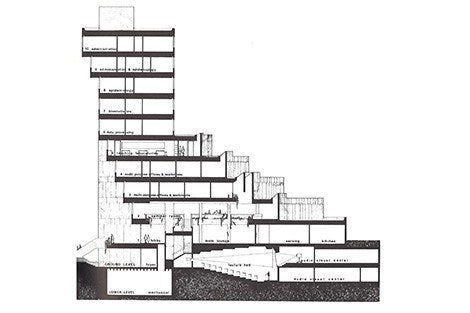Harvard School of Public Health had grand ambitions when it made plans for the creation of the Sebastian S. Kresge Building in the late 1960s, envisioning that it would “permit more than a 100 percent increase in student enrollment” from 172 to an estimated 360. Dean John C. Snyder and other School officials planned an impressive modern educational facility, with a “comprehensive communications system” featuring extensive use of audiovisual services, television, and computer-assisted instruction. For the first time in its history, the School would “have a building specifically designed for the needs of its students and faculty members in the education program.”
A federal grant would cover more than half of the cost of building Kresge. When the Kellogg Foundation and the Mellon Foundation made contributions as well, the fundraising seemed adequate. But the plans hit a snag later that year; construction costs had jumped to 33 percent, and because of tax issues, a gift of Florida real estate that the School and Snyder were counting on to fund the building was worth less than half of the original estimate. The situation looked dire—and catastrophically embarrassing—until the Kresge Foundation agreed to close the gap in exchange for the naming rights.
At the dedication of the Kresge Building in May 1975, the president of the Kresge Foundation, William Baldwin, told the audience that he had gone to summer camp in northern Michigan with Thomas Weller, the powerful chair of the Department of Tropical Medicine who had shared in the 1954 Nobel Prize in Physiology or Medicine. “I remember Tom as that towheaded kid who used to hang around the nature hut,” recalled Baldwin. “As the twig is bent, so is the tree inclined!”
* * * * *
Is there an event, person, or discovery in Harvard School of Public Health history that you’d like to read about? Send your suggestions to centennial@hsph.harvard.edu.
